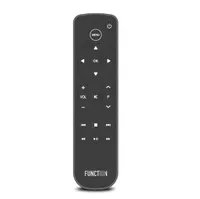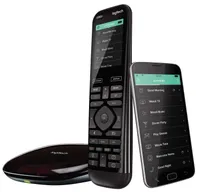Best universal remotes in 2025
Take control of your entertainment center with the best universal remotes

When it comes to the best universal remotes, the choices are less than universal. When I started testing universal remotes about ten years ago, the best were made by Logitech. However, the company discontinued its product line, leading to far fewer choices, and those that remain are still trying to catch up.
Among the current crop of universal remotes that I've tested, my favorite is the SofaBaton X1S. It's the closest that comes to what I liked the most about Logitech's remotes; it's comfortable to hold, not too difficult to program, and you can easily see and feel its buttons in a darkened room.
If you're on a budget, the SofaBaton U2 costs less than $100, and does much of the same. However, I didn't think it was as easy to program, which really is the biggest hassle when it comes to these devices.
Read on for the best universal remotes that I've tested.
The quick list

The SofaBaton X1S is my top pick; it lets you control up to 60 devices, is easy to program, and works with Alexa and Google Assistant.

It can only control 15 devices — and it wasn't as easy to program — but the SofaBaton U2 costs a third of the X1, making it the more economical option.
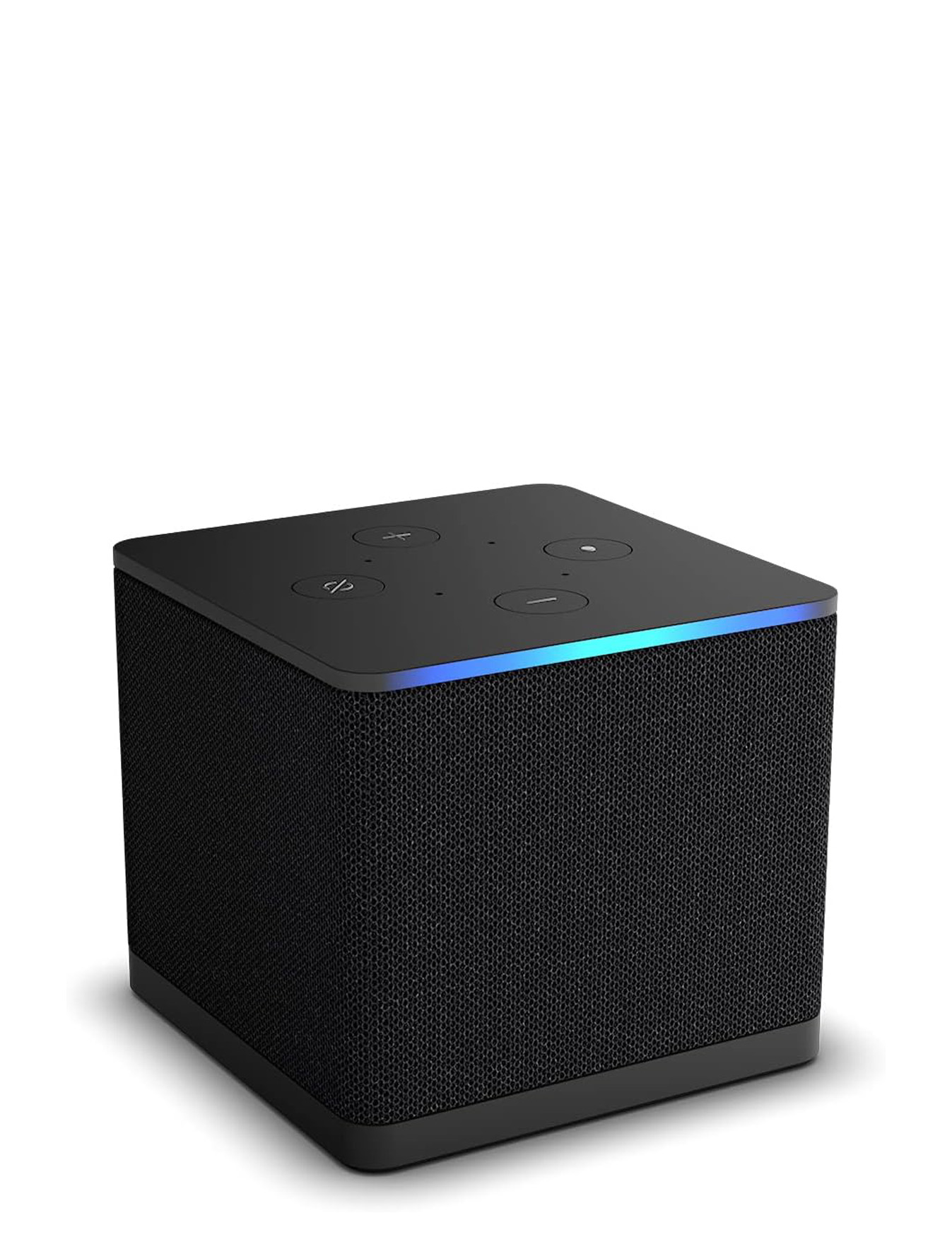
Who needs a remote? The Fire TV Cube lets you control everything by voice alone — provided you use Alexa.
Softabaton released its newest remote, the Sofabaton X2, in December of 2025. This remote has a metal body and a touchscreen, and comes with its own charging dock. I'm currently testing it out, so stay tuned for my review. The Sofabaton X2 is available on Amazon for $359.
The best universal remotes you can buy today
Why you can trust Tom's Guide
Best overall
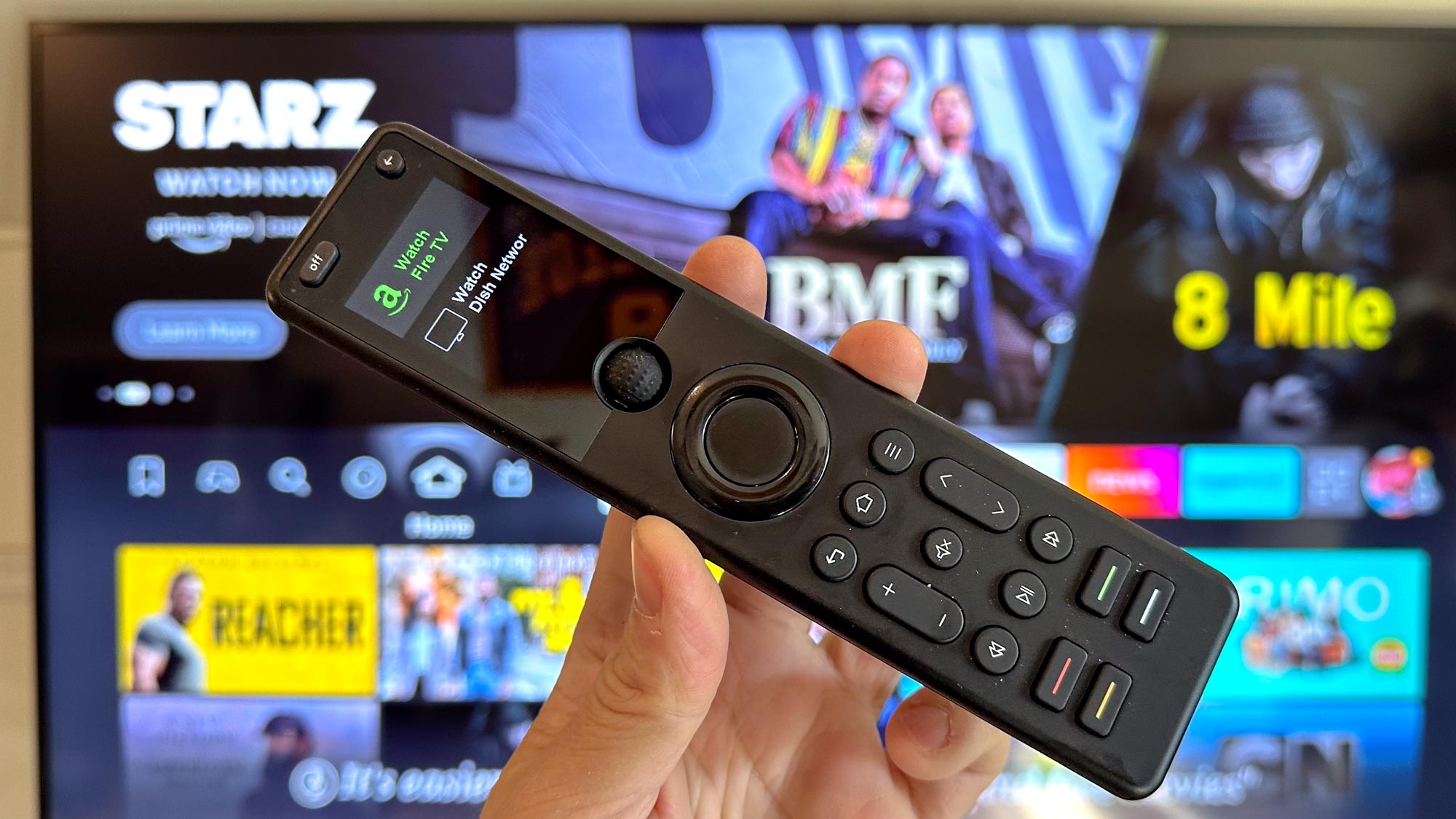

Specifications
Reasons to buy
Reasons to avoid
The closest thing you can get to Harmony's universal remotes is the SofaBaton X1S. The remote itself has an attractive, comfortable design with just the right number of buttons — which are backlit, to boot. There's a small scroll wheel just underneath its display to let you switch between activities and devices; you then use the circular d-pad underneath to control your system. I liked the smooth, rounded edges of the X1S, and its buttons offered just the right amount of resistance and feedback.
The X1S has a built-in battery (there's a USB-C port on the bottom of the remote), but it will last for weeks before it needs recharging. I wish it came with a small recharging cradle, which would make things just a little bit easier.
The SofaBaton X1S sends its commands to a hub, so you can hide everything away behind a cabinet, for a cleaner look. Because the hub is connected to Wi-Fi, you can also link it to Alexa and Google Assistant for hands-free operation. It can even control some smart home devices, but it's so limited it isn't worth bothering to set up.
You can program the X1S with a number of macros to automatically turn your entertainment center to the right settings. The setup process has also become a lot more intuitive since the last time I tested a SofaBaton, which is why my opinion has improved, and why I think it's the best universal remote out there.
Read our full Sofabaton X1S review.
Best budget
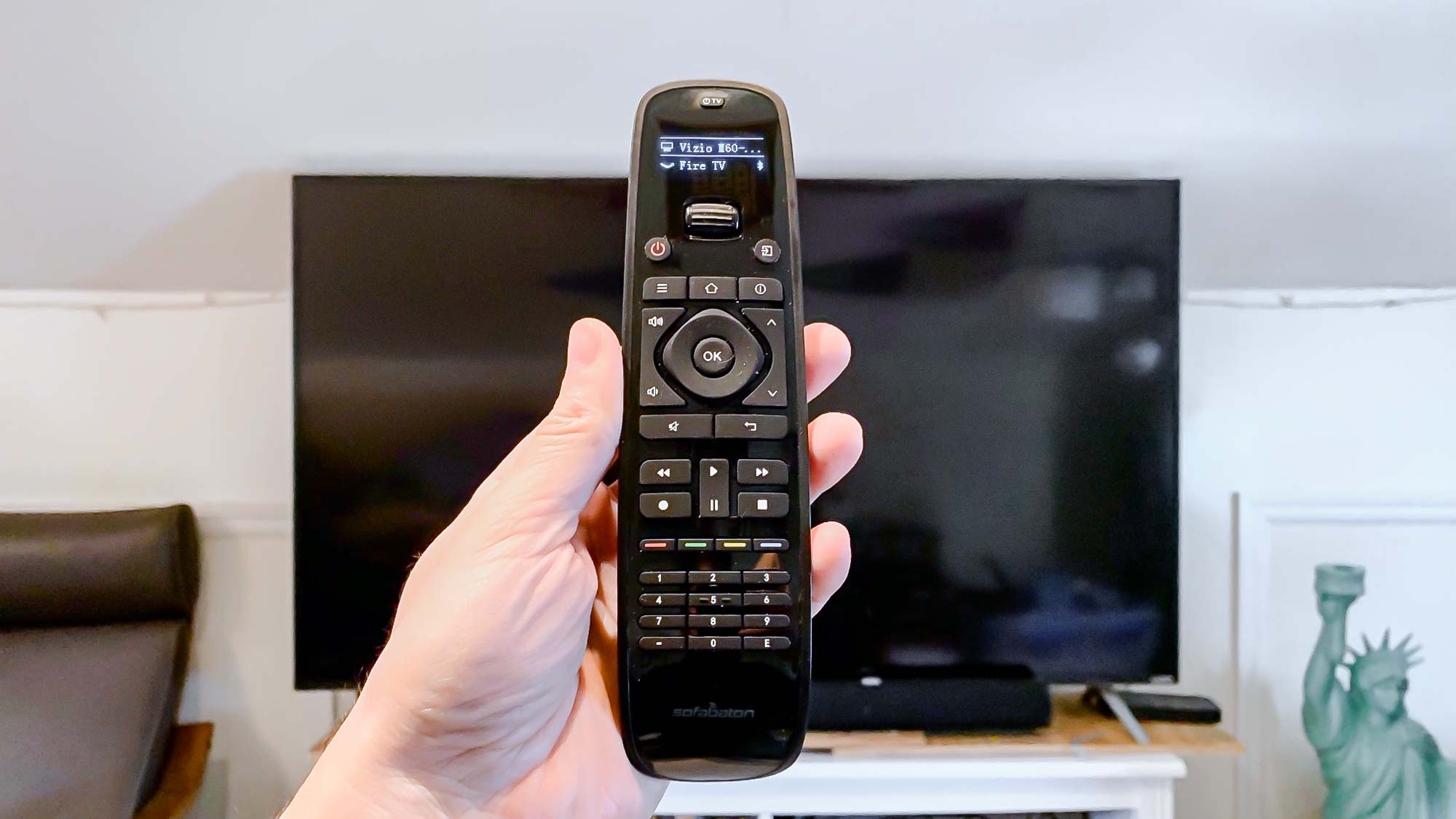
2. SofaBaton U2
Our expert review:
Specifications
Reasons to buy
Reasons to avoid
The SofaBaton U2 looks a heckuva lot like the now-discontinued Logitech Harmony Elite, and it tries its best to perform like the what was best universal remote, too. However, when your remote costs just $49 — a third of what SofaBaton's premium X1S remote costs — you've got to cut a few corners.
For instance, the display on the U2 isn't as sharp or as nice-looking, and the scroll wheel — which you use to switch between activities — felt a bit clunky to turn. And, it can only control up to 15 devices, compared to more than 60 for the Sofabaton X1S.
There's also a bit of a learning curve to programming the SofaBaton U2; I've tested a bunch of universal remotes, and it took me quite a while to figure this one out.
Once I got things sorted, though, the Sofabaton U2 worked pretty well. Check it out if you're looking for a universal remote that's less than $50, but if you can swing it, the SofaBaton X1S offers a much better experience overall.
Best voice control

Specifications
Reasons to buy
Reasons to avoid
If you have limited mobility, then you're going to need a universal remote that you can control with just your voice. While it isn't perfect, the Amazon Fire TV Cube packs both one of the best streaming devices and Alexa into a single package, so you can use Amazon's assistant to not only look up shows and programs you want to watch, but also control your TV, cable box, switch HDMI inputs, and more.
As with most Alexa smart speakers, the Fire TV Cube was generally very quick to respond to our queries, and it's good for more than just watching TV, as you can use it to ask about the weather, control your smart home devices, make phone calls, and much more.
Plus, as a streaming device, it offers an excellent 4K HDR image, fast response times, and more. The Fire TV interface could use some improvement — whose can't? — but it gives you access to just about every streaming service you could want. It also comes with a physical remote, but you can't use it to replicate everything you can do with your voice.
Read our full Amazon Fire TV Cube (2022) review.
Also tested
Function101 Button Remote for Apple TV
Let's face it: The worst thing about the Apple TV is its remote. It prizes form over functionality, which with its minimalist design, is a real pain. The Function101 remote may not look as sleek as the Apple TV remote, but it's a heckuva lot easier to use. And, its larger size actually makes it more comfortable to hold.
However, the Function101 remote does not have a Siri button, so you can't use Apple's voice assistant to look up shows or enter passwords. But, at $39, it's a worthwhile tradeoff — until Apple designs something better.
Logitech Harmony Elite
The former gold standard for universal remotes, it was easy to set up, could control dozens of devices, and also had smart home controls built in to turn on your smart lights and plugs. Unfortunately, Logitech discontinued all of its smart remotes, but still supports them. You can sometimes find the Harmony Elite available on Amazon via third parties, but they're not cheap.
What is a universal remote?
Broadly defined, a universal remote is a device that can control all of your home entertainment devices — your TV, soundbar, streaming device, cable box, A/V receiver, and so on.
More importantly, the best universal remotes can be programmed to control multiple devices at once. Let's say you want to watch a show on your Roku device: You simply press a single button on your universal remote, and it will turn on your Roku streaming stick, turn on your TV and set it to the correct input, and turn on your soundbar or A/V receiver to the right settings.
Universal remotes have become less popular in recent years, as HDMI and CEC (Consumer Electronics Control) have been more widely adopted by TV makers. This technology allows the remote that comes with your TV to control more devices itself, which obviates the need for a third-party universal remote. Still, universal remotes can prove handy, especially if you have older components.
How to choose the best universal remote
If you've gotten this far, you know by now that truly good universal remotes aren't that common. Logitech's Harmony remotes were pretty much the only game in town, and work well, but now that they've been discontinued, you'll have to look elsewhere unless you can get them at a discount.
When it was available, the Harmony Elite, at the top end, cost around $250, and let you control everything you would want, and has a little touchscreen at the top that makes it easy to switch between watching, say, cable TV to your Fire TV stick to your gaming console. Below that was the Harmony Companion, which originally sold for around $149. It doesn't have a touchscreen, but we liked that it has a physical number pad at the bottom, which is better suited for those who like to punch in channel numbers. Both the Elite and the Companion had dedicated smart home controls, so you can dim the lights easily, and you can also use Logitech's app to control everything if you happen to lose your remote.
Our current top pick, the SofaBaton U2, does have a couple of smart home controls, but they're extremely limited, to the point where we wouldn't bother using them.
What to look for in a universal remote
Here are some factors you'll want to consider when buying a universal remote.
- Ergonomics and design: Generally, most universal remotes should feel comfortable to hold. I also prefer universal remotes with physical, backlit buttons, which makes them easier to see and feel in a darkened room.
- How many devices can it control? Depending on the price and complexity of the remote, you may be able to control dozens of devices, or only a few. It's good to take stock of everything you want to control before making a purchase.
- Replaceable vs. rechargeable battery: This isn't a huge consideration, but if you have a remote that takes AA or AAA batteries, you'll need to replace them every so often.
- Infrared vs. Bluetooth: More advanced universal remotes will have both infrared (IR) and Bluetooth transmitters; most devices, like your TV, will use IR, but some of the best streaming devices, like the Amazon Fire TV stick, require a Bluetooth connection.
- Does it have a hub? Some remotes, like the SofaBaton U2 and the Logitech Harmony Elite, communicate with a Wi-Fi-connected hub, which then sends commands to your entertainment system. This has two advantages: It lets you hide your A/V system away so you don't see wires, and it also enables you to control smart home devices linked to your network.
How we test the best universal remotes
To test universal remotes, I set them up in my home entertainment system, and connect them to several streaming devices (an Apple TV, Amazon Fire TV Cube, Roku Stick) as well as a Dish TV receiver, and a soundbar.
I look to see how easy things are to set up — programming a universal remote is often the hardest part of any of these systems — and once everything is up and running, how quickly and accurately the remote can send commands to all of my devices. If the universal remote can also control smart home devices, I'll link them up as well to see how it can handle all the other gadgets in my home.
I also take into consideration the feel of the remote in my hands, as well as the ease with which I can reach all the buttons, and see them in a darkened room.
Get instant access to breaking news, the hottest reviews, great deals and helpful tips.

Michael A. Prospero is the U.S. Editor-in-Chief for Tom’s Guide. He oversees all evergreen content and oversees the Homes, Smart Home, and Fitness/Wearables categories for the site. In his spare time, he also tests out the latest drones, electric scooters, and smart home gadgets, such as video doorbells. Before his tenure at Tom's Guide, he was the Reviews Editor for Laptop Magazine, a reporter at Fast Company, the Times of Trenton, and, many eons back, an intern at George magazine. He received his undergraduate degree from Boston College, where he worked on the campus newspaper The Heights, and then attended the Columbia University school of Journalism. When he’s not testing out the latest running watch, electric scooter, or skiing or training for a marathon, he’s probably using the latest sous vide machine, smoker, or pizza oven, to the delight — or chagrin — of his family.
-
Robert_481 Well, I can't say I agree with your assessment. Spec-wise, the Harmony's are absolutely great, actual usage, not so much. The cloud based storage of the remotes is broken at the moment, you cannot change anything, but even when it's working, the software just isn't as good as the specs -- ever. Also why, oh why doesn't Logitech put real number keys on their upper end remotes?? I need an upper end remote because I have a lot of devices, but I totally hate the minimalist physical buttons.Reply
Truth be told, I don't know of anything better because all the review sites are enamored with the Harmony's, but I sure would like to hear of something!! -
americanaudiophile The better remotes are for custom installers not consumersReply
The URC Pro and RTI remotes are excellent but require programming and are not cheap. They can work over IR, RF, and WIFI. They have hard button remotes which are usually better for AV than a touchscreen but they have apps if you want to go that way too.
The programming software isn't easy to master for most people and isn't usually out there for the end user. You can customize the layout and set up macros in any way you like since the programming isn't on the cloud. You can teach commands from other remotes into your database. In the RTI you can even enter hex codes and set up auto repeats for commands that are fussy. -
Robert_481 Thanks, I'll have to take a look at those, though I really don't want to have to do raw programming on something for home!Reply
I expect Logitech to get their software fixed eventually, but it sure seems like there's an opening for some competition in the home market.
